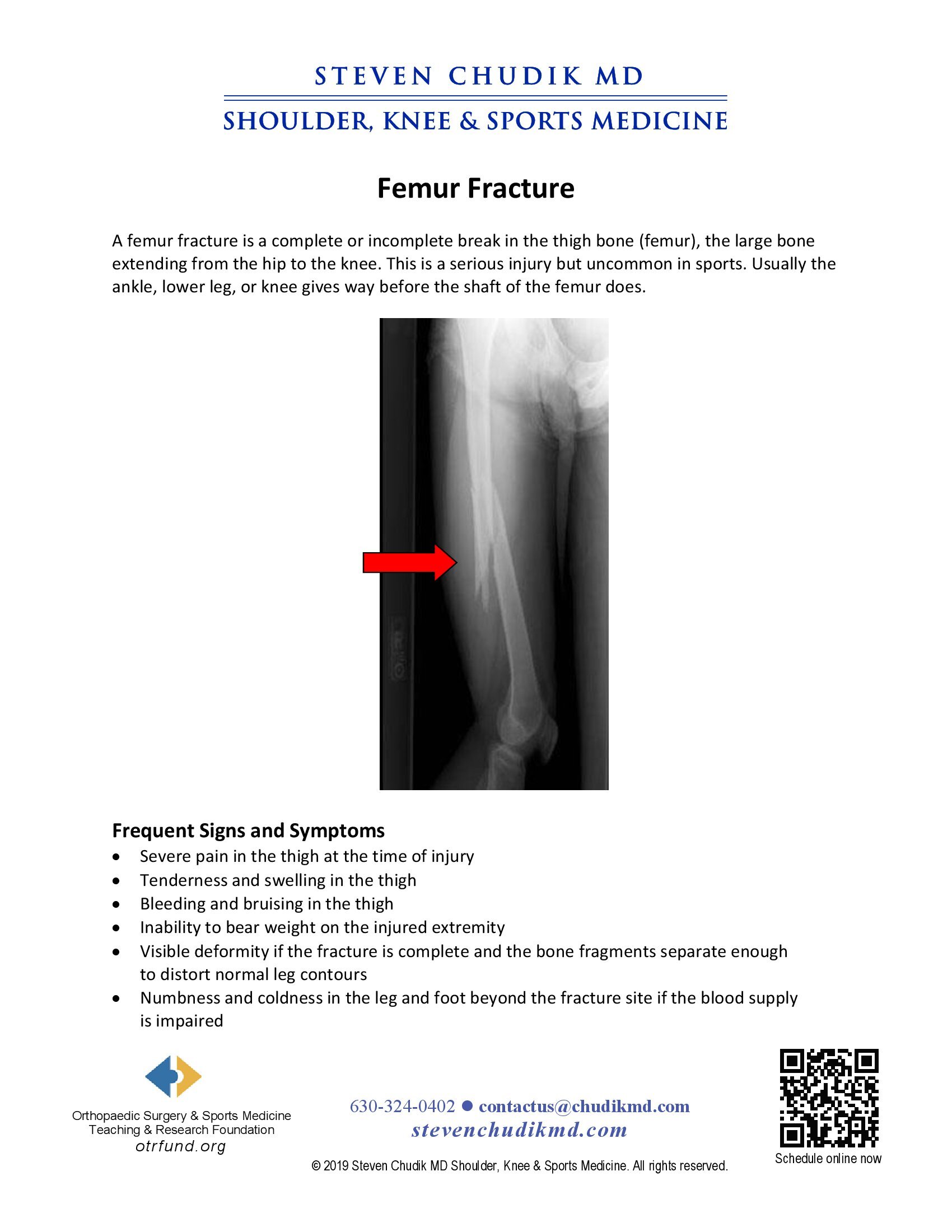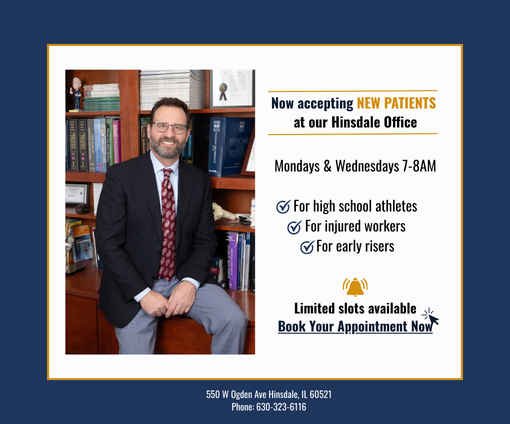 Online appointment scheduling is easy, convenient anytime on any device
Online appointment scheduling is easy, convenient anytime on any device
Home / Knee Surgeon Chicago Illinois / Knee Injuries and Conditions / Femur Fracture
A femur fracture is a complete or incomplete break in the thigh bone (femur), the large bone extending from the hip to the knee. This is a serious injury but uncommon in sports. Usually the ankle, lower leg, or knee gives way before the shaft of the femur does.
Initial treatment consists of medications and ice to relieve pain and reduce swelling. Treatment often requires surgery to hold the fracture in place. This usually requires placing a rod down the center of the bone, although, alternatively, placing a plate or screws to fix the fracture may be recommended. Casting is usually not recommended because the cast would need to involve the abdomen, lower back, and pelvis and extend to the foot. In addition, traction is not usually recommended in adults due to the prolonged constant bed rest and traction required (six to eight weeks). Uncommonly, bone stimulators, which provide electrical currents to the bone, may be attempted. After the bone heals (with or without surgery), stretching and strengthening of the injured and weakened joint and surrounding muscles (due to the injury and the immobilization) is necessary. This may be done with or without the assistance of a physical therapist or athletic trainer. The rod, plate, or screws do not need to be removed. Rarely, an external fixator (screws in the bone with a connecting frame outside the skin) is used to hold the fracture.
Learn More
Content provided by Dr. Chudik not to be used for diagnosis and treatment. You can receive a proper evaluation and diagnosis by making an appointment with Dr. Chudik
 “Dr. Chudik, Thank you for the speedy recovery!”
“Dr. Chudik, Thank you for the speedy recovery!”
Dr Steven Chudik founded OTRF in 2007 to keep people active and healthy through unbiased education and research. Click to learn about OTRF’s free programs, educational opportunities and ways to participate with the nonprofit foundation.
1010 Executive Ct, Suite 250
Westmont, Illinois 60559
Phone: 630-324-0402
Fax: 630-920-2382
(New Patients)
550 W Ogden Ave
Hinsdale, IL 60521
Phone: 630-323-6116
Fax: 630-920-2382
4700 Gilbert Ave, Suite 51
Western Springs, Illinois 60558
Phone: 630-324-0402
Fax: 630-920-2382

© 2025 © 2019 Copyright Steven Chudik MD, All Rights Reserved.

